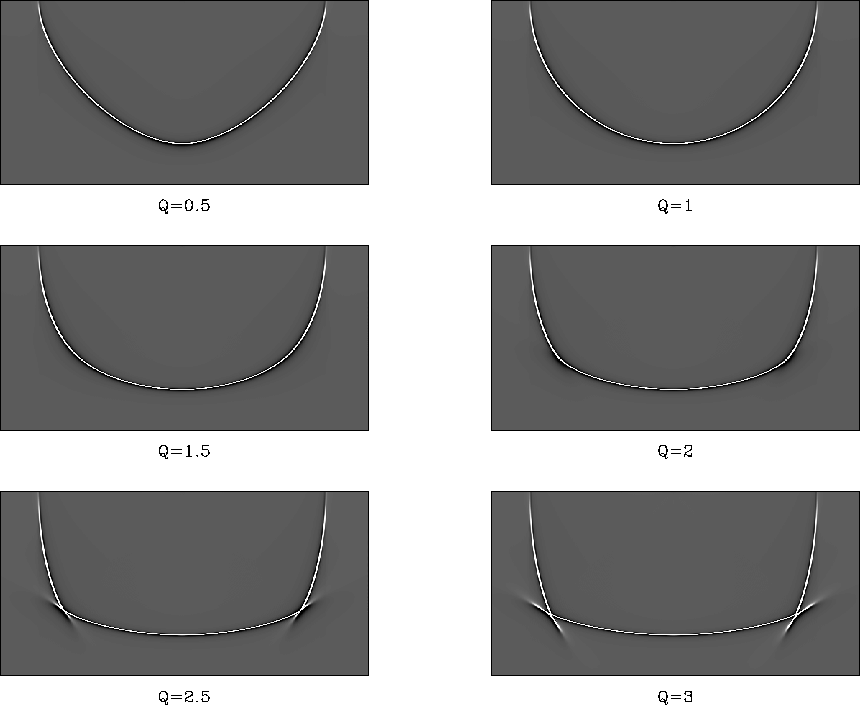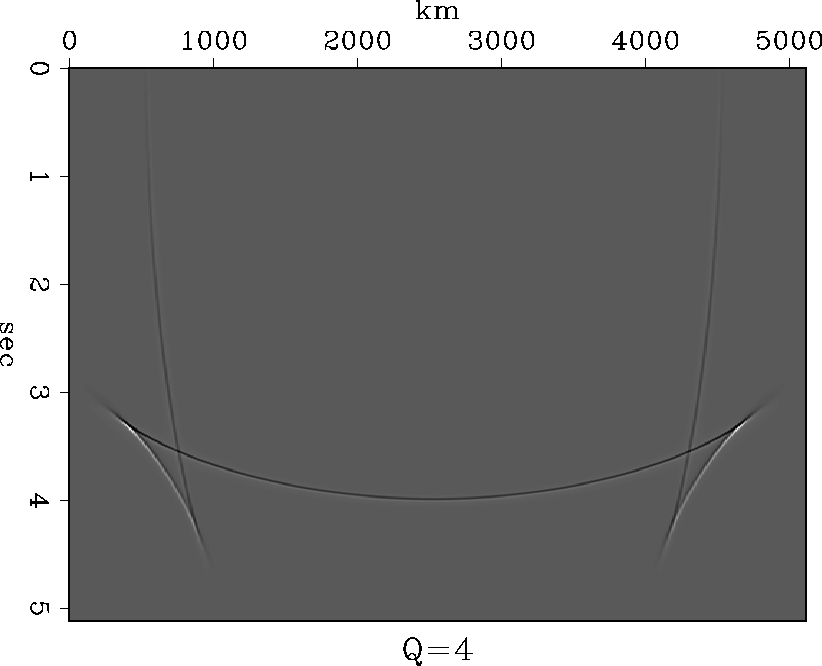The extended Stolt algorithm is applied to the case of anelliptic anisotropy. Anelliptic anisotropy is an extension of elliptic anisotropy that retains the convenient symmetry properties of the elliptic anisotropy in approximation. Muir and Dellinger 1985 showed that the equations for elliptic anisotropy of the form
| (5) |
| |
(6) |
The anelliptic factor q gives the deviation of true horizontal velocity and paraxial (near vertical, short spread) NMO velocity and perturbs the behavior away from ellipticity in between the coordinate axes. q=1 reduces equation (6) back into the elliptic form. The dispersion relation for the anelliptic case is given by
| |
(7) |
![]()
| |
(8) |
| |
(9) |
| |
(10) |
After implementation of the dispersion relation and Jacobian in the Stolt
migration algorithm, the effect of different q values is tested on an
input consisting of three spikes. The result can be seen in Figure ![[*]](http://sepwww.stanford.edu/latex2html/cross_ref_motif.gif) .
.
 |
Going from q=0.5 to q=3, the effect of the anisotropy can be clearly observed.
The v-shaped impulse response at q=0.5 becomes an ellipse for q=1 and changes
slowly into triplications for larger q values. The triplications result
from extreme velocity variations in different directions.
This triplicating behavior is shown in more detail for q=4 in Figure
![[*]](http://sepwww.stanford.edu/latex2html/cross_ref_motif.gif) .
.
 |
Most of the energy is concentrated in the triplications and along the apex of the semi-circle. It diminishes along the sides of the semi-circle.